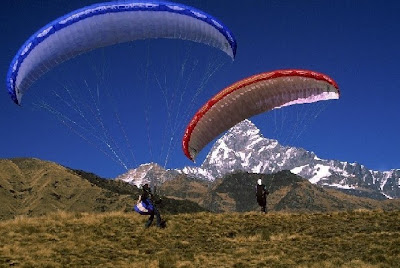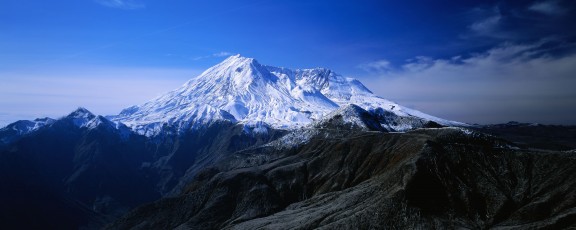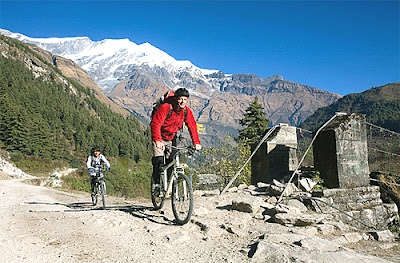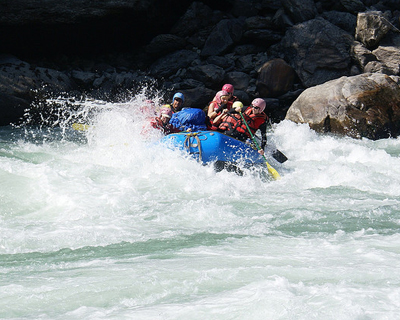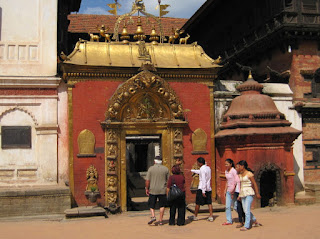People in Nepal commonly welcome you Namaste as a traditional salute (means I salute the divine in you) that is wisely employed in the foremost a part of country. concerning twenty three million Nepalese are product of sixty nine completely different cultural and linguistic cluster conjointly called ethnic teams living in numerous, regions of the country. principally every ethnic cluster has their own distinctive costumes, speak their own languages or dialects, and follow their own non secular practices. They live below completely different various geographic and environmental orientations, from the low plains close to the Indian border, northward through the center hills of Mahabharat vary and valleys, and up to the high plain valleys of the Himalayan zone.
However, the globalization motives and innovations result to the Nepalese society that created several changes day by day additionally of many infrastructural developments new roads building, trendy public education, democracy since 1990 and Federal Democratic Republic since in on twenty three could 2008, and even speedy innovation of data technology, web access are creating large changes brought among new generation. a lot of and a lot of Nepalese, particularly young people speak Nepali and fluent English language, dresses western vogue garments most of the time and customarily relate to the skin world.
In Nepal usually 2 major teams of individuals may be found in high Himalayan region Tibitan origin (Tibeto-Burman or Bhot Burmes) and in low land to mid hill Indo-Aryan (Bharopeli) origin teams. Himalayan region settlements of Tibetan-speaking teams Sherpa, Tibetan origin Gurung of Manang, Mustang and Dolpo region and Thakali of Mustang’s high plain are found in sub alpine to trans Himalayan areas. Outside Nepal, the most effective known are the Sherpa people that has gained world renown and interest attributable to their mountaineering skills. In fact, the word “Sherpa” which means mountain guide in English, comes from the group’s proud Sherpa name.
In the mid hill principally settled Rai, Limbu, Tamang, Magar, Sunuwar, Gurung and Chepang teams furthermore as alternative mongoloid teams live during this areas. The Brahmans, Chhetris, Newar and Thakuris and totally different occupational teams Kami, Damai Sarki, Gaine are unfold typically over most elements of the country. In cities Newar, Marbadi, Punjabi, Brahaman, Kshetri and alternative mixed teams also are settled. The teams of Rai, Limbu, Gurung, Magar are widespread as Gurkha solder within the world.
In Terai Plain Brahaman, Kshetri, Tharu, Rajput, Danuwar, Majhi, Darai, Rajbansi, Dhimal, Satar, Jhangar, Singh, Jha, Yadav and Lal(Mithila) individuals inhabit within the dun, valleys and totally different occupational teams reside and being sure along by the concepts of peace and harmony. Terai’s Mithila teams are widespread for his or her authentic ancient arts and paintings. however but largely either living in hilly region or Terai region their major occupation is ancient agriculture broadly adopted.
Social Structure
As Nepal being a very broad diversified home land of many ethnical teams it's common social family structure. normally living in joint family system at a home, respecting and following own socio-traditional conducts generation to generation. Showing physical affection brazenly in public is restricted; gents and women socialize separately each before and when wedding with family gatherings. Normally wedding is organized by oldsters with facilitate of wedding consular known as Lahmi. Among new generations love wedding is additionally common currently each day. they need right to settle on their mate and judge their own future bright. there's no thanks to say that Nepalese society remained untouched by international changes, mainly in major cities and cities of young generation massively influenced by data technology of world and adopted many fascinating ways that.
Occupations
In general largely Nepalese individuals are concerned in their ancient occupation agriculture. Most of the individuals people who reside out of city they belongs their circle of relatives farm land where they grow each main crops and completely different money crops seasonally. regarding seventy six of total population in Nepal still belongs to ancient agriculture system as their main supply of economy and remainder of do alternative jobs as cottage industries, general manufactures, merchandise trading, government officers, hospitality tourism and others. All along still regarding thirty third of total populations are dependent in agriculture.
Food
In normal way Nepalese people’s food habit can be marked as a rice culture social adoption. Nepalese main course of meal referred to as Dal-Bhat-Tarkari historically that is ideal combination of carbohydrate, mineral, protein, vitamin, and fat. The $64000 wholesome Dal-Bhat-Tarkari is being eaten everywhere Nepal typically and it's habitual approach of twice daily. Besides morning and late afternoon time tea, occasional different drinks and lightweight food snacks also are often eaten normally. Dall is well cooked lentil soup from totally different beans, Bhat is boiled rice, Tarkari is curried vegetables, pickle of seasonal vegetable and fruits, salad and curried or fried meat as a nonvegetarian food are often eaten commonly. Well refined ghee, mustard oil are used for the everyday Nepalese cooking propose of curry things for style and flavor spices are used like cumin seed, coriander, black pepper, turmeric, sesame seed, ginger, garlic, methi(fenugreek), bay leaf, clove, cinnamon, chilies, pepper, mustard seed and salt added by style.
In the mountain space, where rice is growing terribly less, millet, barley, bark wheat and maize are growing commonly in appropriate climate thus individuals of there principally eat Dhindo with Gundruk or totally different vegetable curry, meat curry, handmade pickle, yoghurt and milk as a their main course however they additionally wish to have Dall Bhat time to time. This authentic tradition of food habit is extremely common everywhere Nepal’s mountain areas. there's additionally many common continental food things are accessible in cities abundantly moreover several countries food things are ready by many restaurants and quick food stalls of around main hub of tourists.
Dress
There are several specific dressing vogue in Nepal as a rustic is being home of multi cultural and lingual teams folks. Most Nepalese ethnic teams have their own distinctive type of dress per region and culture. Among gents Daura, Suruwal, Dhaka Topi,T-shirt, Shirt Pant, totally different casual wears and women Kurta Salwar, Saries shirt(Cholo) T-shirt, Shirt Pant, totally different casual wears are commonly worn by Nepalese folks everywhere the country. within the cities notably, young hearts each men and ladies typically dress in western vogue clothing, whereas elder ladies principally wear Saries shirt (Cholo), Kurta Salwar modestly.
Religion
Nepal is multi spiritual country within the world thus completely different ethnic teams live with their own means of non secular follow, lifestyle, language, culture and tradition with ever peace of harmony in society. regarding eightieth of total populations are Hindu faith follower lives within the everywhere Nepal’s east to west up to Maha Bharat vary in north, regarding 100 percent Buddhist faith folks among live bellow of Himalayan region to mid hill, valleys and in cities along four-dimensional Muslim spiritual folks and remainder of alternative spiritual folks live in numerous components of the country. In Hindu community each ritual ceremony handled by priest (pundit), by Lama (monk) in Buddhism community also by Mullah in Muslim community.
In term of vast vary geographical varied land orientation options of the country Hinduism among Indo-Aryan communities influence within the lower elevation and therefore the Buddhism among Tibetan-origin within the Himalayan region and different totally different elements of the Nepal. In Nepal moreover historically, Buddhism and Hinduism each were never 2 distinct faiths for societies they believe these 2 religion have inter relation since then so share faiths and worship common deities in temples, monasteries and principally pilgrimage by each communities individuals. Though Nepal has variety of non secular cluster they perpetually live in peace and harmony. there's not any record of non secular conflict in Nepal nevertheless. All Nepali has revered the national feeling of ‘unity in diversity, Nepali’s specialty and establishing own reorganization to the planet.
However, the globalization motives and innovations result to the Nepalese society that created several changes day by day additionally of many infrastructural developments new roads building, trendy public education, democracy since 1990 and Federal Democratic Republic since in on twenty three could 2008, and even speedy innovation of data technology, web access are creating large changes brought among new generation. a lot of and a lot of Nepalese, particularly young people speak Nepali and fluent English language, dresses western vogue garments most of the time and customarily relate to the skin world.
In Nepal usually 2 major teams of individuals may be found in high Himalayan region Tibitan origin (Tibeto-Burman or Bhot Burmes) and in low land to mid hill Indo-Aryan (Bharopeli) origin teams. Himalayan region settlements of Tibetan-speaking teams Sherpa, Tibetan origin Gurung of Manang, Mustang and Dolpo region and Thakali of Mustang’s high plain are found in sub alpine to trans Himalayan areas. Outside Nepal, the most effective known are the Sherpa people that has gained world renown and interest attributable to their mountaineering skills. In fact, the word “Sherpa” which means mountain guide in English, comes from the group’s proud Sherpa name.
In the mid hill principally settled Rai, Limbu, Tamang, Magar, Sunuwar, Gurung and Chepang teams furthermore as alternative mongoloid teams live during this areas. The Brahmans, Chhetris, Newar and Thakuris and totally different occupational teams Kami, Damai Sarki, Gaine are unfold typically over most elements of the country. In cities Newar, Marbadi, Punjabi, Brahaman, Kshetri and alternative mixed teams also are settled. The teams of Rai, Limbu, Gurung, Magar are widespread as Gurkha solder within the world.
In Terai Plain Brahaman, Kshetri, Tharu, Rajput, Danuwar, Majhi, Darai, Rajbansi, Dhimal, Satar, Jhangar, Singh, Jha, Yadav and Lal(Mithila) individuals inhabit within the dun, valleys and totally different occupational teams reside and being sure along by the concepts of peace and harmony. Terai’s Mithila teams are widespread for his or her authentic ancient arts and paintings. however but largely either living in hilly region or Terai region their major occupation is ancient agriculture broadly adopted.
Social Structure
As Nepal being a very broad diversified home land of many ethnical teams it's common social family structure. normally living in joint family system at a home, respecting and following own socio-traditional conducts generation to generation. Showing physical affection brazenly in public is restricted; gents and women socialize separately each before and when wedding with family gatherings. Normally wedding is organized by oldsters with facilitate of wedding consular known as Lahmi. Among new generations love wedding is additionally common currently each day. they need right to settle on their mate and judge their own future bright. there's no thanks to say that Nepalese society remained untouched by international changes, mainly in major cities and cities of young generation massively influenced by data technology of world and adopted many fascinating ways that.
Occupations
In general largely Nepalese individuals are concerned in their ancient occupation agriculture. Most of the individuals people who reside out of city they belongs their circle of relatives farm land where they grow each main crops and completely different money crops seasonally. regarding seventy six of total population in Nepal still belongs to ancient agriculture system as their main supply of economy and remainder of do alternative jobs as cottage industries, general manufactures, merchandise trading, government officers, hospitality tourism and others. All along still regarding thirty third of total populations are dependent in agriculture.
Food
In normal way Nepalese people’s food habit can be marked as a rice culture social adoption. Nepalese main course of meal referred to as Dal-Bhat-Tarkari historically that is ideal combination of carbohydrate, mineral, protein, vitamin, and fat. The $64000 wholesome Dal-Bhat-Tarkari is being eaten everywhere Nepal typically and it's habitual approach of twice daily. Besides morning and late afternoon time tea, occasional different drinks and lightweight food snacks also are often eaten normally. Dall is well cooked lentil soup from totally different beans, Bhat is boiled rice, Tarkari is curried vegetables, pickle of seasonal vegetable and fruits, salad and curried or fried meat as a nonvegetarian food are often eaten commonly. Well refined ghee, mustard oil are used for the everyday Nepalese cooking propose of curry things for style and flavor spices are used like cumin seed, coriander, black pepper, turmeric, sesame seed, ginger, garlic, methi(fenugreek), bay leaf, clove, cinnamon, chilies, pepper, mustard seed and salt added by style.
In the mountain space, where rice is growing terribly less, millet, barley, bark wheat and maize are growing commonly in appropriate climate thus individuals of there principally eat Dhindo with Gundruk or totally different vegetable curry, meat curry, handmade pickle, yoghurt and milk as a their main course however they additionally wish to have Dall Bhat time to time. This authentic tradition of food habit is extremely common everywhere Nepal’s mountain areas. there's additionally many common continental food things are accessible in cities abundantly moreover several countries food things are ready by many restaurants and quick food stalls of around main hub of tourists.
Dress
There are several specific dressing vogue in Nepal as a rustic is being home of multi cultural and lingual teams folks. Most Nepalese ethnic teams have their own distinctive type of dress per region and culture. Among gents Daura, Suruwal, Dhaka Topi,T-shirt, Shirt Pant, totally different casual wears and women Kurta Salwar, Saries shirt(Cholo) T-shirt, Shirt Pant, totally different casual wears are commonly worn by Nepalese folks everywhere the country. within the cities notably, young hearts each men and ladies typically dress in western vogue clothing, whereas elder ladies principally wear Saries shirt (Cholo), Kurta Salwar modestly.
Religion
Nepal is multi spiritual country within the world thus completely different ethnic teams live with their own means of non secular follow, lifestyle, language, culture and tradition with ever peace of harmony in society. regarding eightieth of total populations are Hindu faith follower lives within the everywhere Nepal’s east to west up to Maha Bharat vary in north, regarding 100 percent Buddhist faith folks among live bellow of Himalayan region to mid hill, valleys and in cities along four-dimensional Muslim spiritual folks and remainder of alternative spiritual folks live in numerous components of the country. In Hindu community each ritual ceremony handled by priest (pundit), by Lama (monk) in Buddhism community also by Mullah in Muslim community.
In term of vast vary geographical varied land orientation options of the country Hinduism among Indo-Aryan communities influence within the lower elevation and therefore the Buddhism among Tibetan-origin within the Himalayan region and different totally different elements of the Nepal. In Nepal moreover historically, Buddhism and Hinduism each were never 2 distinct faiths for societies they believe these 2 religion have inter relation since then so share faiths and worship common deities in temples, monasteries and principally pilgrimage by each communities individuals. Though Nepal has variety of non secular cluster they perpetually live in peace and harmony. there's not any record of non secular conflict in Nepal nevertheless. All Nepali has revered the national feeling of ‘unity in diversity, Nepali’s specialty and establishing own reorganization to the planet.
